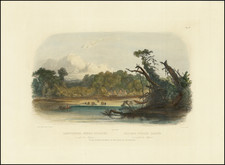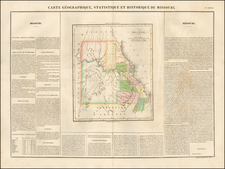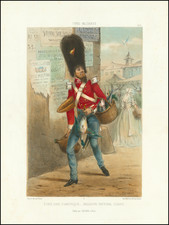The First Wall Map of Kansas City
This mammoth wall map of Kansas City by G.M. Hopkins is a masterwork of cartographic artistry that exemplifies the immense growth and transformation of this city during the second half of the 19th century. The map, an epitome of meticulous detailing, reflects the city's urbanization and its pivot towards modernization.
Kansas City, originally known as the "Town of Kansas," was incorporated in 1850. At this time, it was a small, bustling river town situated at the confluence of the Missouri and Kansas Rivers. The city's strategic location played a significant role in its rapid growth, serving as a crucial hub for pioneers headed west during the era of westward expansion. Its early years were marked by trade, commerce, and a burgeoning population.
The 1850s saw the creation of the Hannibal and St. Joseph Railroad, which increased access to the city, transforming it into an even more significant hub for the movement of goods and people. Despite the turbulence of the Civil War years in the 1860s, Kansas City continued to thrive.
The city's name was officially changed from the "City of Kansas" to "Kansas City" in 1889, a year before the production of Hopkins' map. This period was characterized by further growth and expansion. The city's infrastructure was modernized, and there was substantial investment in the construction of buildings, railroads, and bridges.
G.M. Hopkins' 1890 wall map of Kansas City beautifully encapsulates this remarkable era of change and growth, showing the city following a decade where the population grew from about 55,000 to over 132,000. Colored by subdivisions and additions, the map's intricate details show the dense network of streets and railroads, the proliferating residential areas, the marked plots of land owned by businesses and homeowners, and the emergent commercial and industrial zones. The various political wards are shown.
It is also noteworthy to mention the two inset maps. The top left one depicts the northern tip of the city along the Missouri River, showing the river's critical role in the city's growth and development. The bottom right one features the Washington section, which, at the time, was an important part of the city's expansion.
The Hopkins map would appear to be the first wall map of the City. OCLC shows no other wall maps of the city prior to 1890.
Rarity
The map is very rare, and it is possible this is a unique survival.
We note that Hopkins began producing smaller maps with the same title in about 1886, but all are much smaller.
















![(Civil War - Missouri Map) [Autograph Letter, signed by soldier A. B. Burton, to Henry B. Coffin, with hand-drawn sketch map:] Plat of Jefferson City, Mo.](https://storage.googleapis.com/raremaps/img/small/93385.jpg)